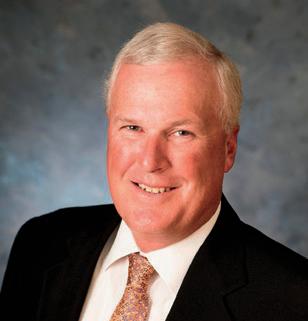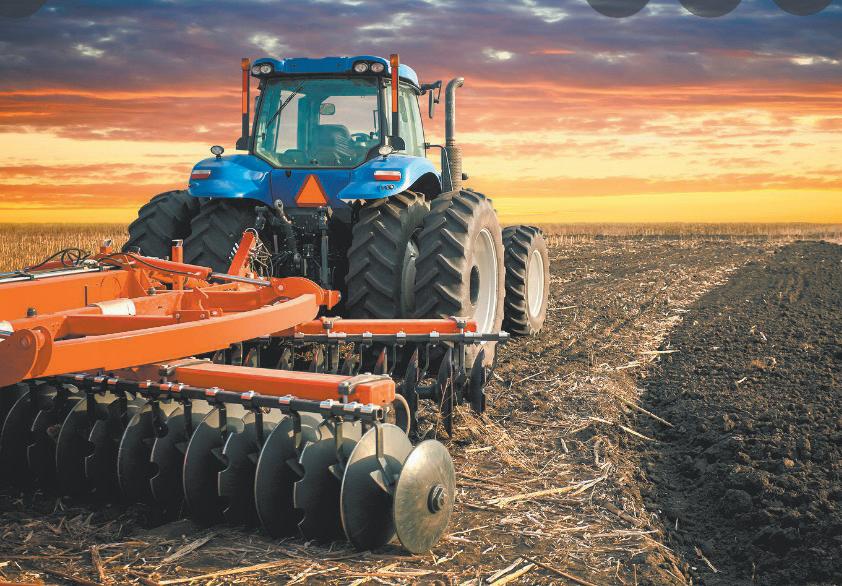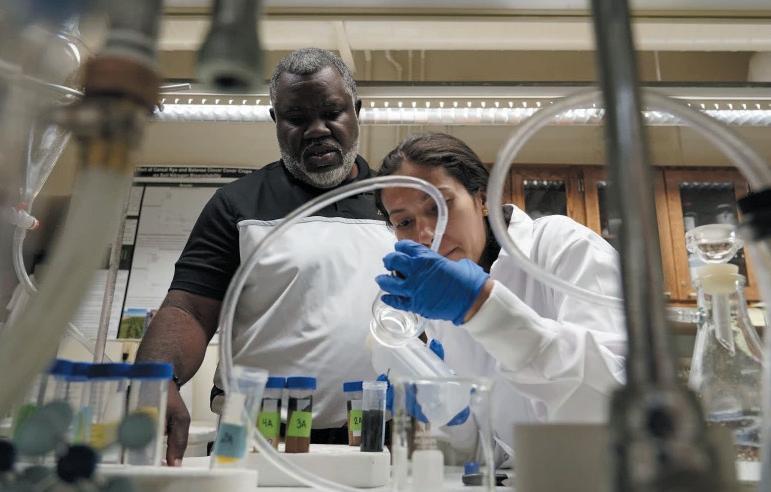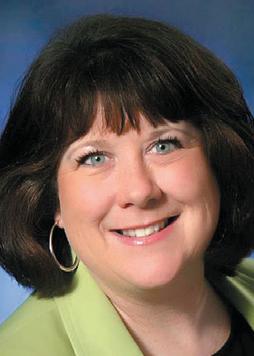Fall Farm


■ It’s high time for shrubs that attract birds
■ Farmers cautiously optimistic about ag economy
■ Giving farmers credit for storing carbon



■ Plusmuchmore!
Saturday, August 26, 2023















■ It’s high time for shrubs that attract birds
■ Farmers cautiously optimistic about ag economy
■ Giving farmers credit for storing carbon



■ Plusmuchmore!
Saturday, August 26, 2023


















Interest in songbirds is often thought of when it comes to feeding, but with some planning you can also offer habitat for possible nesting. Planting shrubs is an activity that takes place in the fall, but there can be added benefits when it comes to selection. Here are some tips for selecting high-growing shrubs to attract birds.


DOGWOODS
Select for high-quality food. Our best dogwoods for high-quality food for the birds are Gray Dogwood (Corunus racemosa) and Silky Dogwood (Conrus amomum). Dogwoods are most often associated with their spring floral displays, but these flowers turn into fruit and offer an excellent food resource for the birds. Gray Dogwood is very adaptable (suckers easily) to soil conditions and is excellent for difficult sites (not polite for the garden site). Silky Dogwood is especially useful in moist sites and has reddish stems and burgundy fall color.
SUMACS


If you’ve got room to spare and care to share with the birds, sumacs are a great selection. Smooth Sumac (Rhus glabra) offer excellent fall foliage when the large compound leaves turn red and orange. Smooth Sumac is a dioecious species as male and female flowers are produced on separate


plants. It is recommended to plant three to five plants in close proximity to ensure the presence of both sexes for ample fruit and seed production. Although a fair food source, the canopy is too open to make good cover.

Plant elderberry in spring after the final frost. If you are planning to establish elderberry (Sambucus canadensis), selecting a proper site can be beneficial in the fall. Preplant soil testing is recommended to determine if pH levels are suitable to the level of 5.5-6.5. Sites that have less than ideal drainage can be more productive if planted on berms or raised areas with better drainage.


Viburnums are vibrant for their fall color, but some also offer a late fall feeding opportunity for birds. Arrowwood Viburnum (Viburnum dentatum), Wayfaring Tree Viburnum (V. lantana), American Cranberrybush Viburnum (V. opulus var. americanum), and Linden Viburnum (V. dilatatum) all are fall fruiting with fruits blue-black in color. There are many choices when it come to viburnums. Possumhaw (V. nudum) fruits are attractive to many desirable birds and American Cranberrybush Viburnum has attractive fruit that attracts cardinals. Be careful when selecting viburnum to select an appropriate size for your location.




 By Erica Quinlan AGRINEWS PUBLICATIONS
By Erica Quinlan AGRINEWS PUBLICATIONS

















WEST LAFAYETTE, Ind. —
The Purdue University/CME
Gr-oup Ag Economy Barometer rose two points in July to a reading of 123, indicating a slight increase in farmer sentiment about the ag economy.
“Producers were slightly more confident about the farming economy in July, despite recent crop price volatility and continued concerns about rising interest rates,” said James Mintert, director of Purdue’s Center for Commercial Agriculture.


REPORT HIGHLIGHTS







• Seventy-two percent of farmers felt now is a bad time for large investments.


• Nearly two-thirds of farmers said they expect interest rates to increase.

• The No. 1 concern on farms was higher input costs.
• Producers were more concerned about rising interest rates than declining output prices.
• Nearly half of the farmers currently use cover crops.

• The two main reasons for using cover crops were to improve soil health and erosion control.

• Four out of five farmers said cover crops improved soil health and yields. Read the full Ag Economy Barometer report at https:// purdue.ag/agbarometer.
Erica Quinlan can be reached at 815-410-2070, or equinlan@shawmedia.com. Follow her on Twitter at: @AgNews_Quinlan.


DYSART, Iowa (AP) — When Al Schafbuch cut back on plowing his Iowa fields decades ago and later began growing cover crops, he was out to save money on fertilizer and reduce erosion.


He got those benefits and saw his soil change for the better, too: dark, chunky, richly organic matter that he said feels like “chocolate cake.”
There’s one more big payoff that benefits everyone: tilling the soil less, and growing more cover crops, can help farmers store more planet-warming carbon in fields.




More plants take in more carbon dioxide, and soil microbes breathe out less carbon when undisturbed.
That can mean money for participating farmers in the form of carbon offsets — payments that companies can
Soil researcher Asmita Gautam (right) prepares a soil sample for carbon content analysis while talking with Shalamar Armstrong, associate professor of agronomy at Purdue University in West Lafayette, Indiana.

make that support carbon storage in farms and, in theory, balance out their emissions elsewhere.
“The more carbon you store from the atmosphere with your crops, and the more crops grown throughout the year, you offset some of your waste, your wasted energy,” said Shalamar Armstrong, an associate professor of agronomy at Purdue University. “Because you’ve stored carbon that would have been emitted (into) the atmosphere.”
It’s an area getting more attention from lawmakers, researchers and industry professionals.
The U.S. Department of Agriculture recently announced a $300 million investment to monitor agricultural emissions, including by creating a research network to monitor carbon in soil.
And U.S. Sens. Tina Smith, D-Minn., and Todd Young, R-Ind., introduced a bill that Smith said would support the research needed to “properly credit soil carbon storage.”
The USDA announcement and the legislation are both aimed at the difficult question of how to quantify carbon stored in soil.
It’s an obstacle to overcome if the young and booming soil carbon market is to avoid the scrutiny, and skepticism, directed at carbon credit markets.
“The science piece (of carbon credits) has really lagged behind, particularly when it comes to things like



monitoring, reporting and verification,” said Cristel Zoebisch, deputy director of policy at climate organization Carbon180.
“These are huge obstacles for not just soil carbon sequestration, but really any land-based carbon removal solution.”
Armstrong has been trying to help fix that problem. He runs a lab where researchers are investigating how farming management affects the amount of carbon in soil across different landscapes.
He and others at Purdue have been studying soil samples that date back more than 40 years, comparing different types of tilling and cover crops to determine their long-term effects on carbon storage.
It can take years of fieldwork, careful chemistry in the lab and lots of expensive equipment to puzzle that out.
He hopes his precise calculations will help farmers make decisions that allow them to receive worthwhile incentives for sequestering carbon while maintaining their existing profits.

But other academics worry that even if farmers do get paid for storing soil carbon, it won’t solve a bigger problem: that carbon markets often don’t work.
For offsets to be legitimate, they have to meet four criteria. They have to store carbon that would otherwise be emitted; they have to be verifiable in data; they have to be immediate —



planting a tree that might grow up in 20 years doesn’t cut it; and they have to be long-lasting, said John Sterman, a professor of management at Massachusetts Institute of Technology.
Better quantifying soil carbon storage through research might make the offsets more verifiable, but it doesn’t address other factors.
For example, many farmers rent the land they work, and can’t guarantee that carbon stored on their land will stay put in several decades if someone else is working the land.
Barbara Haya, director of the Berkeley Carbon Trading Project at University of California, Berkeley, has worked on research that she said shows the effects of carbon offset projects are commonly overestimated, sometimes vastly so.
“Carbon trading is a mechanism that has failed miserably over the last 20 years that we really need to be moving away from,” Haya said.
U.S. Rep. Jared Huffman, D-Calif., last month introduced a bipartisan bill to support farmers in improving soil health, with incentives that don’t necessarily involve the carbon market.
He said farmers in his district have also described the benefits of regenerative practices, and that many would be interested in participating in carbon markets with “robust” accounting systems. But he added that those hoping for serious climate action shouldn’t
rely only on offsets.
“In my opinion, it’s really not the silver bullet,” Huffman said. “I think offsets are inherently sketchy.”


Some farmers are moving cautiously.
Brad Wetli, an Indiana farmer who collaborates with Armstrong, has been trying techniques that use less tilling and has been planting cover crops like rye for a few years now.
He’s happy with the way his current fields look — “It feels like you’re doing something” to contribute to sustainability, he said — but he’s still weighing his options with possible carbon credit contracts, doing the math and waiting to see whether the price will be right, since many offset agreements can last for several years.
“I’m going to do maybe a field or two at a time, and as I learn more, I’ll hopefully incorporate the carbon or carbon credits more into the operation,” he said.



Schafbuch, for his part, is skeptical of carbon credits, but would have been enthusiastic about regenerative farming no matter the upfront costs.
He said he was an early adopter in the face of neighbors who laughed and suggested he would “end up being broke” — but he’s proved them wrong.
“I’m convinced that if you do it right, anybody can do it,” he said.
 By Martha Blum AGRINEWS PUBLICATIONS
By Martha Blum AGRINEWS PUBLICATIONS


STOCKTON, Ill. — Greg Thoren is working to develop a healthy microbial system on his farm in Jo Daviess County.
“Microbes make everything work,” said Thoren during a Nutrient Stewardship Field Day. “Microbes need air, and if they do not have air, they’re dead.”
The regenerative farmer’s operation includes 2,220 acres of row crops and 125 acres of pasture for his herd of 125 beef cows.
“I grow non-GMO crops and I don’t use any seed treatments,” he said. “I’m 100% no-till and 100% cover crops.”


Thoren typically does not use any insecticide.


“I did spray for armyworms this year on a short 30 acres out of 900-some acres of corn and I’m cutting herbicide rates back” the farmer said.
“This is the sixth year without any fertility except nitrogen,” he said. “I’ve been cutting the nitrogen rates back and this year I’m down to about 100 units.”
Cover crops on the farm are utilized
for grazing Thoren’s beef herd.
“I seeded one field down this spring with a 15-way mix and I’ve already grazed those 40 acres,” he said. “I got 25 days of pasture by strip grazing and moving the cattle every day which really saved me this year.”
Farmers need to think different, Thoren said.

“I’m not a yield guy; I’m a net profit guy,” he said.

Thoren compared his system on 800 acres of corn last year to conventional farmers representing 110,000 acres for yields and input costs.
“I averaged 185-bushel corn and the conventional guys averaged 215 bushels per acre, so I gave up 30 bushels of corn,” he said. “With corn at $6.50 per bushel, I’m $195 per acre behind on gross revenue.”
However, Thoren’s expenses were $330 per acre less than the conventional farmers.
“So, I netted $135 per acre more than they did,” he said. “That’s how I measure my yield — by net profit, not bushels per acre.”
For his soybeans, Thoren seeds them into cereal rye.

“It took forever for them to come up,” he said. “I rolled the cereal rye after I planted the soybeans and I did not use an ounce of Roundup this year.”
For his non-GMO beans, Thoren receives a $2.50 premium when they are sold.
“None of this stuff I’m talking about is something I invented,” Thoren said. “People have been doing this stuff for years and we need to do more because my opinion is you’re going to be forced to do it.”
John Musser, certified crop adviser at Stephenson Service Company, has been working with Thoren to evaluate different systems on his farm since 2012.
“One of the challenges we may have with no seed treatments is stand and how well the plants get started,” Musser said. “With no-till and cover crops, the ground stays colder and wetter longer so the corn doesn’t come out of the ground as fast.”

This year, Musser said, there is a higher level of billbug activity at the farm than he’s seen for a while.
“It’s not a new bug and generally it’s in the bottoms associated with a nutsedge issue,” he said. “It is also associated with no-till and slower plant development where the billbug will burrow into the growing point and you’ll get an ugly looking plant.”
The dry weather this year has impacted the crops on Thoren’s farm.
“We have corn and soybean potash deficiency with the dry June,” Musser said. “We’ve seen this potash deficiency show up on most farms at some point.”
Potash can get trapped between the clay particles and doesn’t get released without the water movement during

dry periods, the crop adviser said.
“It may not be low in potash, but we’re low in availability for 2023,” he said. “Don’t get excited about needing a lot of potash because you may not; it might be a weather phenomenon.”
Just like on many other farms, waterhemp is a challenging weed for Thoren.
“We’ve found with high levels of rye as a cover crop we’ve reduced the speed in which waterhemp comes along, but we haven’t gotten rid of it,” Musser said. “I don’t expect to have zero herbicide applications, but there are opportunities to reduce the amount.”
Martha Blum can be reached at 815-410-2254, or mblum@shawme dia.com. Follow her on Twitter at: @AgNews_Blum.









Food insecurity is on the rise. New data on global food security and nutrition indicate a significant increase in the number of people on this planet lacking access, at times, to enough food for an active and healthy life since 2019.
“The State of Food Security and Nutrition in the World 2023” suggests somewhere between 691 million and 783 million people faced hunger in 2022, with a midrange of 735 million.



The report, published jointly by five United Nations agencies, says over 122 million more people have become food insecure in the past three years, citing the pandemic, repeated extreme weather events and conflicts, including the war in Ukraine.
The report found that nearly 30% of the global population does not have constant access to food and that malnutrition is affecting nearly 150 million children under the age of 5.
Approximately 2.4 billion individuals, largely women and residents of rural areas, did not have consistent access to nutritious, safe and sufficient food in 2022.
Before the pandemic, food insecurity here in the United States was lower than it had been since they started measuring it in the 1990s.
Although the situation is much less dire here in the United States than in Western Asia, the Caribbean and Africa, food insecurity — especially in rural areas — is on the rise.
The U.S. Department of Agriculture defines food insecurity as a lack of consistent access to enough food for an active, healthy life.
Although hunger and food insecurity are closely related, they are distinct concepts. Hunger refers to a personal, physical sensation of discomfort, while food insecurity refers to a lack of available financial resources for food at the household level.
USDA’s Economic Research Service says an important indicator of the nation’s long-term well-being is poverty among children. Child poverty often has an impact that carries throughout a lifetime, especially if the child lived in poverty at an early age.
Sadly, people living in America’s rural areas and farm communities face a higher probability of experiencing food insecurity and hunger than those who live far from the fields where crops are grown.
It is hard to believe that 2.2 million households in rural America face hunger. The truth is, many hardworking and capable men and women whose families have lived in your rural community for generations, are sliding deeper into the well of poverty.
Some choose that life. Most, however, do not. The children have no voice in the matter and are the ones most impacted.


The most recent statistics provided by Feeding America suggest nearly 13% of those under 18 years of age — right here on American soil — are food insecure.
It is heartbreaking to see pictures of malnourished children in Somalia, India and Haiti. But it is more heartbreaking to know there are children here in the very heartland of America who will not have enough to eat today.
If you have the ability to do so, please consider supporting the food bank in your area.
Save more on our versatile BX2380 tractor with performance-matched attachments. Kubota tractors are rated #1 for durability and owner experience in the U.S.* Stop in for a demo** and a great deal.


do them.BX2380 21.6 Gross HP












